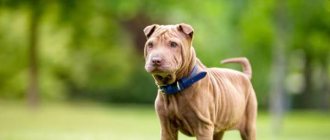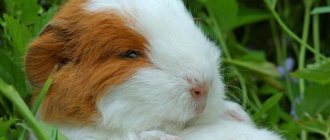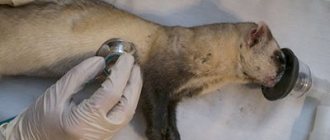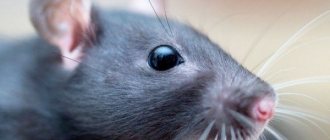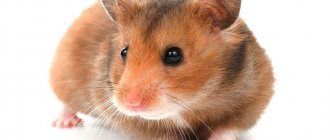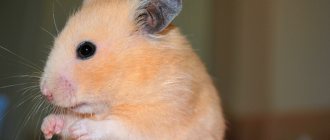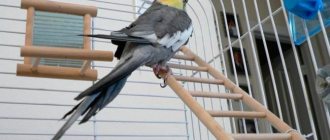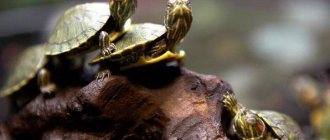The Corella parrot is perfect for home breeding. Beginning breeders are interested in all the nuances of keeping them: what to feed, where to place them, how to treat these good-natured birds. Against the background of everyday issues, a special moment stands out: how long do cockatiels live, because a feathered pet can become a true friend.
How long does a cockatiel live in the wild?
Many people believe that Australia, the homeland of cockatiels, is a blessed country with an abundance of water in rivers, warm air, a variety of trees and shrubs rich in tasty fruits. On the one hand this is true, on the other hand it is not.
How long cockatiels live in their natural environment is influenced by the conditions in which they have to look for food and hide from enemies.
- Parrots often face drought and the need to travel many kilometers in search of clean water and plentiful food. Not everyone is able to fly long distances tirelessly and die. Many birds drink contaminated water and then die from outbreaks of epidemics.
- Predators that pose a danger to cockatiels include eagles, falcons, and peregrine falcons. Nymphs fly slowly and they have practically no chance of flying away from fast birds of prey, and especially from the fastest bird in the world - the peregrine falcon.
- Many birds fall into the hands of hunters, who catch them and then sell them, or simply eat them.
- For farms, attacks by hungry parrots can be quite destructive, which is why they are exterminated as pests.
- Forest fires that often break out during drought are also destructive for birds.
Therefore, it is not surprising that the life expectancy of a Corella parrot in the wild does not exceed 10 years.
Diet
The cockatiel menu should be as close to natural as possible. This means that the diet should be dominated by:
Grain feed (millet, hemp seed, oats, corn, canary grass). The average rate of grain feed is 1.5-2 tablespoons daily. The last number is for a large parrot.
Vegetables (cucumbers, carrots, Brussels sprouts).
Fruits (Plums, apples, peaches, pears, cherry plums). The parrot is partial to these fruits.
In small quantities, you can add wheat grains, sunflower seeds, nuts and legumes soaked in water. Sometimes you can gradually give animal products - boiled eggs and low-fat cottage cheese. Birds especially need animal protein during nesting.
Prohibited Products
The list of foods that cockatiels should not eat includes:
- Candied fruits.
- Seeds of stone fruit crops.
- Hot peppers.
- Milk, cheese, butter, sour cream.
- Spices.
- Potato.
- Mushrooms.
- Branches of conifers, oak, viburnum, pear, lilac, poplar.
- Sorrel and rhubarb.
How long do cockatiels live at home?
At home, parrot owners are responsible for providing food, clean water and protection from dangers. How many years a cockatiel nymph will live in captivity depends on the owner’s experience and his ability to create favorable conditions for his pet. Typically, their life expectancy averages 16-18 years.
If the owner tries and brings the parrot’s living conditions to almost ideal, and, of course, if the bird’s genetics are also good, there is a chance that the number of years of life of the cockatiel will increase to the thirty-year mark.
At one time, the British magazine International Zoo Yearbook provided information about a parrot that lived for 35 years, but so far no more information has appeared about the same centenarians.
Who lives longer: male or female?
The lifespan of a male cockatiel is slightly longer than that of a female. Life expectancy here is influenced by physiological features. The ability of females to lay eggs leads to wear and tear on their bodies.
In their natural habitat, birds are guided by natural factors and have offspring during the rainy season, when there is a lot of food. In captivity, owners often provoke cockatiels to reproduce. The main thing is that they take into account that in order for females to recover after reproducing offspring, a break between laying eggs is necessary for at least six months, and preferably a year.
Features of keeping Corella parrots boy and girl
When purchasing a mixed-sex pair, it is important to understand that this will eventually lead to the appearance of chicks. Therefore, first you need to properly equip the place where the parrots are kept.
First, you need to purchase not an ordinary cage, but a so-called cage, which has a flat roof and a hole on one of the walls, except the front one, so that when the time comes to hang the nesting device.
In the nymphs' home, the length of the cage should be twice as wide as the width, so that when flying from perch to perch, muscles are strengthened and metabolism is improved, which will have a positive effect on the health of the offspring.
A mixed-sex pair of cockatiels will quickly have offspring
What does life expectancy depend on?
If you are concerned about how many years a Corella parrot can live in captivity, make sure that the conditions for keeping it are safe. It is important to be prepared for the fact that you will have to spend a lot of time with the bird, communicate and care for it, and patiently endure its endless chatter and screams. A domesticated parrot should have the opportunity to fly around the room from time to time, and the bird should not be kept in a cage that is too small.
Cell
When choosing a home for a parrot, you need to proceed primarily from the size of the pet. Considering that a cockatiel can grow up to 30-33 cm, it needs a fairly spacious metal cage or a rectangular enclosure. Approximate dimensions are 40x50x100 cm. It would be good if the cage had a retractable tray - this would make it easier to clean the pet’s apartment.
The cage should not be installed in a draft, not in direct sunlight and away from heating devices.
Inside the cage you need to equip it with the necessary accessories:
- feeders for different types of food;
- automatic drinker (better if it is vacuum);
- perches made from fruit tree branches untreated from bark;
- toys (ladders, ropes, swings, mirrors, rattles in the form of balls, bells, etc.);
- bathtub for bathing.
If you do not want to place a bathtub in the cage, from time to time give your pet water treatments in the bathtub under a shower or tap, or spray him with water from a spray bottle.
Diet
With a varied and balanced diet, cockatiels live much longer than those birds whose diet is poor and monotonous. Nymph parrots are granivores, therefore the basis of their diet is grain feed.
Fresh fruits, citrus fruits, vegetables, herbs (especially celery, dandelion leaves and carrot tops) will perfectly enrich your bird’s diet with useful substances.
If the birds are not busy breeding, they can be given cottage cheese and eggs no more than once a week.
Attention! Never feed your parrots human food or food from your table. Bird food should be as natural as possible.
It is important to give your cockatiel vitamin and mineral supplements in courses - this will affect how long it will live in your home.
Environment
The microclimate in the room where the cockatiel lives is another important factor influencing the lifespan of the parrot. The room temperature should not be lower than +18°C, but preferably not higher than +25°C, try to keep the air humidity at 70%.
Owner reviews
Corella parrots are very popular among our lovers of domestic ornamental birds. The fact is that a parrot is easily tamed, and can also easily learn both individual words and entire phrases. But at the same time, it should be noted that the bird’s ability to reproduce various sounds that are not typical for a parrot is quite limited.
Important to remember! The Corella parrot should never be teased, as when angry it makes very unpleasant sounds, and quite loud ones at that.
For the sake of fairness, it should be noted that the parrot makes mostly monotonous and very annoying sounds, sometimes grating on the ears. Males sing well, imitating various sounds, as well as the singing of other birds, such as a nightingale or titmouse. Many owners claim that the parrot simply begs for pieces of food from the table and is able to open the lock on the cage when no one is home.
Disadvantages of KEEPING A Cockatiel Parrot. Are you ready for this?
Causes of early death
Before getting a cockatiel parrot, you should study information about the rules of care and maintenance, read reviews from the owners, so as not to destroy the bird through improper actions and negligence. The causes of premature death of a parrot at home can be:
- inattention to the symptoms of cockatiel diseases, and, as a result, an advanced disease with a fatal outcome;
- ventilating a room with a parrot in it, which can lead to a cold;
- an unclosed window through which the parrot flew away;
- poor quality feed and contaminated water;
- electric shock due to chewing wires;
- direct rays of the sun falling on a cage with a pet left on the windowsill;
- parrot injuries: a bird that was not accustomed to its new environment was released to fly around the room and it flew into a mirror, window glass or furniture;
- inattention of the owner: they slammed the door without noticing the pet sitting on it and crushed it;
- poisoning from poisonous houseplants, building materials or medications to which the parrot had access;
- getting into containers with water in which the bird can drown (pots of soup, toilet, bucket, etc.);
- lack of care and attention from the beloved owner, which causes the bird to become depressed.
As you can see, the responsibility for how many years your cockatiel will live with you depends on your attentiveness, care and knowledge.
Why does the Corella parrot scream, tremble, hiss, and pluck its feathers?
Such actions of a parrot are typical if it is experiencing stress . It often happens that, having acquired a pet, the owners do not allow the bird to get used to the new environment, but begin to stick their hand into the cage, thinking that this way it will adapt faster.
However, the cockatiel perceives these actions as a threat and begins to scream and hiss, hoping to scare the uninvited guest, while shaking and plucking feathers indicates an extreme form of excitement.
Therefore, in order not to give your parrot a heart attack, you need to gradually tame it: first to your presence next to the cage, then to your voice, let it out more often and talk all the time.
When stressed, a cockatiel may tremble, hiss, or pull out its feathers.
How to extend the life of a cockatiel
The ideal conditions for a long and healthy life for a cockatiel at home would be:
- a spacious cage with all the necessary accessories, which are regularly cleaned of dirt and disinfected;
- quality food and water; Once you get a cockatiel, you should not skimp on food for it - this directly affects how long it will live with you;
- communication, caressing, stroking and scratching, approval on your part is the key to the mental health of the parrot;
- timely response to symptoms of trouble in a pet (changes in mood, appearance, droppings, the appearance of discharge from the ears, eyes, cloaca) and contacting a veterinarian;
- creating a comfortable microclimate in your home, especially since temperature, air humidity and the absence of harmful fumes are the conditions for a good and long life not only for cockatiels, but also for their owners.
Caring for a cockatiel is similar to caring for a small child. The bird is completely dependent on you, on the conditions that you create for it to live. You have every chance to prolong your pet’s life and enjoy communicating with him for many years by trying to create ideal living conditions.
It is interesting to learn how to properly keep a cockatiel and check the quality of grain for feeding it in this video:
Health
In general, this breed is not prone to diseases and is long-lived. Any diseases that occur in cockatiels are the result of neglect of the pet. Be attentive to the behavior of the bird, because it will not be able to tell you that it is not feeling well.
What health problems may exist:
- Feather loss.
- Feather and skin parasites.
- Violation of the structure of bones and beak.
- Infectious diseases.
- Disturbances in the gastrointestinal tract.
- Obesity.
- Amyotrophy.
- Avitaminosis.
Sound the alarm immediately and run to the clinic if the bird is already clearly sick. Most diseases are caused by poor or inappropriate nutrition and stress. Signs of health problems can be seen in behavior. The cockatiel becomes more aggressive, more active, or, on the contrary, very lethargic and constantly sleepy.
The pet may refuse any food or liquid. Check for breathing problems and any discharge from the nose, eyes or cloaca. Never treat a cockatiel yourself! Entrust examination and treatment only to a specialist!
Species (subspecies)
Photo of a light gray cockatiel
The only species of cockatiel that lives in natural conditions has a light gray or dirty gray color. But thanks to breeders, new varieties of nymphs of different colors were bred in captivity. Currently, there are eleven main color variations of cockatiels, and some even have their own subspecies.
Albino Corella
Photo of an albino cockatiel.
A distinctive feature of this species is the white color of the plumage of the female and male and red eyes. A slight creamy coating is allowed, but the yellow color of the head feathers and crest is retained.
Males always have snow-white feathers, but females may have slightly yellowish spots on the wings and under the tail, which create a marbled effect.
To produce albinos, breeders crossed lutino with parrots that have a white head.
The albino cockatiel subspecies includes the white nymph, which has black eyes and a clearly visible yellow coating on its plumage. Interestingly, the two longest tail feathers in males are snow-white in color, while the rest remain slightly yellowish. In females, the tail is yellow and the undertail is marbled. When obtaining this subspecies, they were used to cross white females and gray males, who are carriers of the whiteness gene.
Lyutino
Photo of Corella Lutino
Corella Lutino is characterized by red eyes and deep yellow feathers. In adults, the eye color changes to dark cherry. There is spotting on the wings and back, but the color contains only various shades of yellow, which determines the name of the species.
On the light yellow plumage of the dewlap there is a kind of ladder of more clearly visible spots. This is considered a disadvantage of the breed, so breeders are looking for crossbreeding variations that will make it possible to get rid of it.
In male lutinos, the “blush” on the cheeks must be orange.
Sheki
Photo of Sheki cockatiel
Sheki are the most popular and expensive varieties of cockatiels. They are distinguished from other species by the presence of white spots on gray feathers. The symmetrical arrangement of spots, as well as the presence of gray and white in equal proportions, are especially appreciated.
Sheki have gained great popularity among breeders, as they are recognized as the best source material for breeding new subspecies. An example of this breeding is the Pearl Neck, which has an all-white head, a yellowish-tinged tail, and iridescent gray feathers on the back and wings. Interestingly, in adult females the color remains even after molting, while in adult males the color changes to the classic shek.
Among this subspecies of nymphs there are “harlequins” with gray wings, a yellow head and crest feathers. The rest of the body, neck and legs are white.
Cinnamon colored cockatiel
Photo of a cockatiel with a brown tint.
In the body of parrots, under the influence of enzymes, a black pigment is formed. Due to the failure of biochemical processes, the cinnamon-colored nymph produces more of these enzymes than the gray-colored cockatiel. As a result of crossing them with lutino, individuals with varying degrees of intensity of brown color are obtained.
From birth to 3 months, the eye color of the chicks remains red and then darkens. In adult birds, the beak and pink feet also gradually become darker.
In addition to the varieties described, the following subspecies of nymphs are distinguished:
- black;
Photo of black cockatiel
- light and pearl gray;
Photo of a light gray cockatiel
- dark yellow;
Photo of dark yellow cockatiels
- white- and black-winged.
Photo of a white-winged cockatiel
Description and habitats
Characteristics
Feathered representatives of this breed are good-natured and sociable birds. Slightly smaller in size than a pigeon, they have a funny appearance, which is given to them by their yellow crest and bright cheeks. This whole cute image will not leave any lover of decorative birds indifferent. In their homeland, they were dubbed nymphs for their color and ability to blend into their environment. The color of a cockatiel can be:
- gray
- white
- yellow
Habitats
Australia is considered their homeland . In nature, they prefer to live on trees growing along rivers. Most often, they settle on dry eucalyptus trees so that their color matches the dried gray trunk as closely as possible. This way they become invisible to their natural enemies. And these birds living in the Australian jungle have plenty of them. They were brought to Europe not so long ago , or rather, in the 19th century.
The color of males is brighter - silver-gray. Females have a duller dark gray plumage and a less bright crest. The gender can only be determined by looking closely at the grown parrot. Each subspecies has its own characteristics. The most common species is a gray-bodied parrot with a yellow head, orange cheeks and a cute yellow-colored crest with dark gray tips. Up to 12 months their color may change. The body size is 33 centimeters, which includes a fifteen-centimeter tail. It's all about 80-110 grams.
